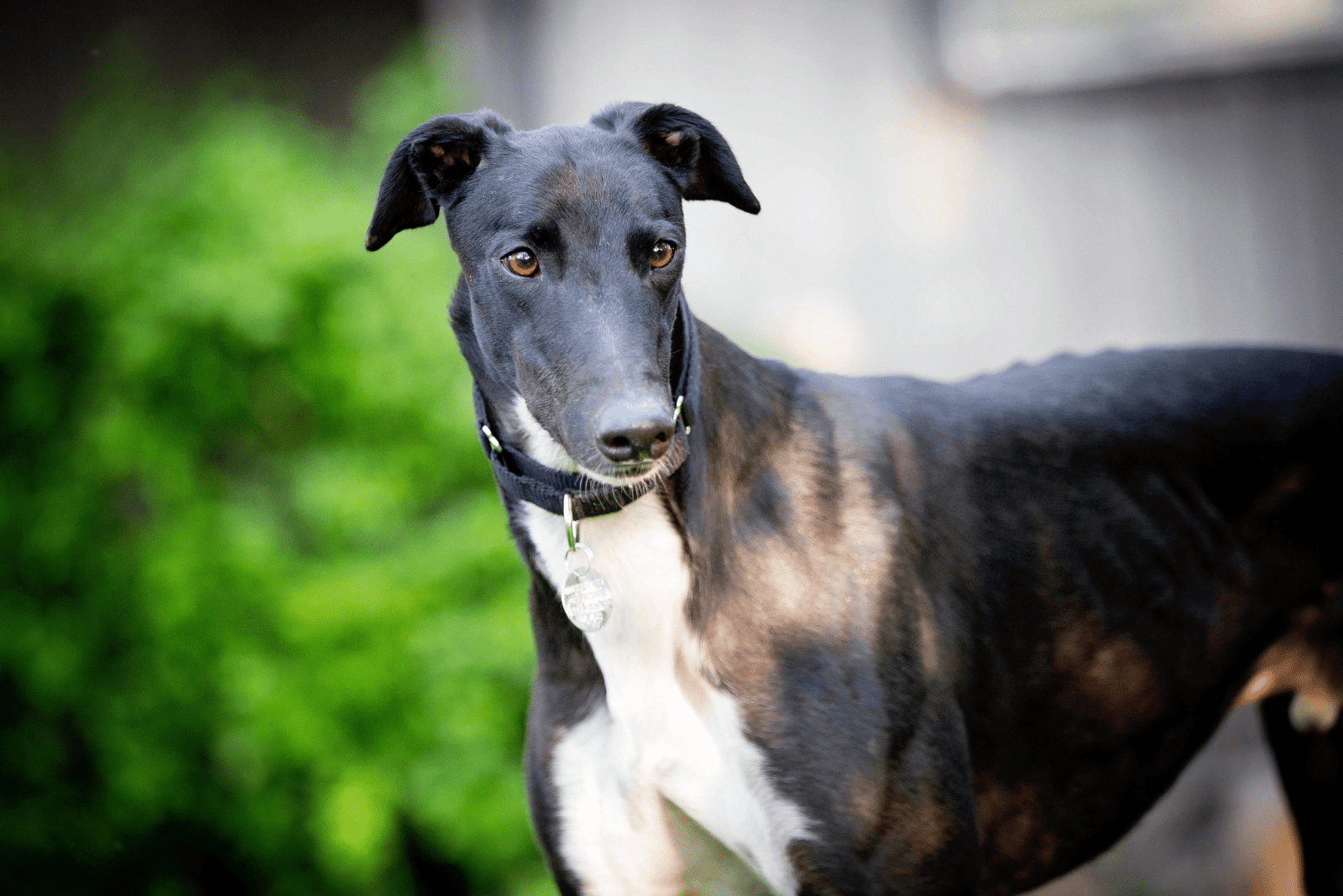Never have I ever encountered a dog that does not like eating food. I guess the phenomenon dates back to dogs’ first ancestors who did not have human assistance in procuring food. Eating all the food that can fit into your body is the only way to make sure you survive.
Nowadays, dogs are often overfed because we humans tend to project our own principles and life habits onto animals. While that is wrong, it is also a testimony of how close canines and humans became over the years.
Greyhounds are bred for speed and speed only. Their bodies are aerodynamic and getting any extra fat on the chest and stomach will transform them into living anchors. We are about to embark on a journey to find out the causes, symptoms and solutions to fat Greyhounds.
Fat Greyhounds Gain More Than A Few Pounds
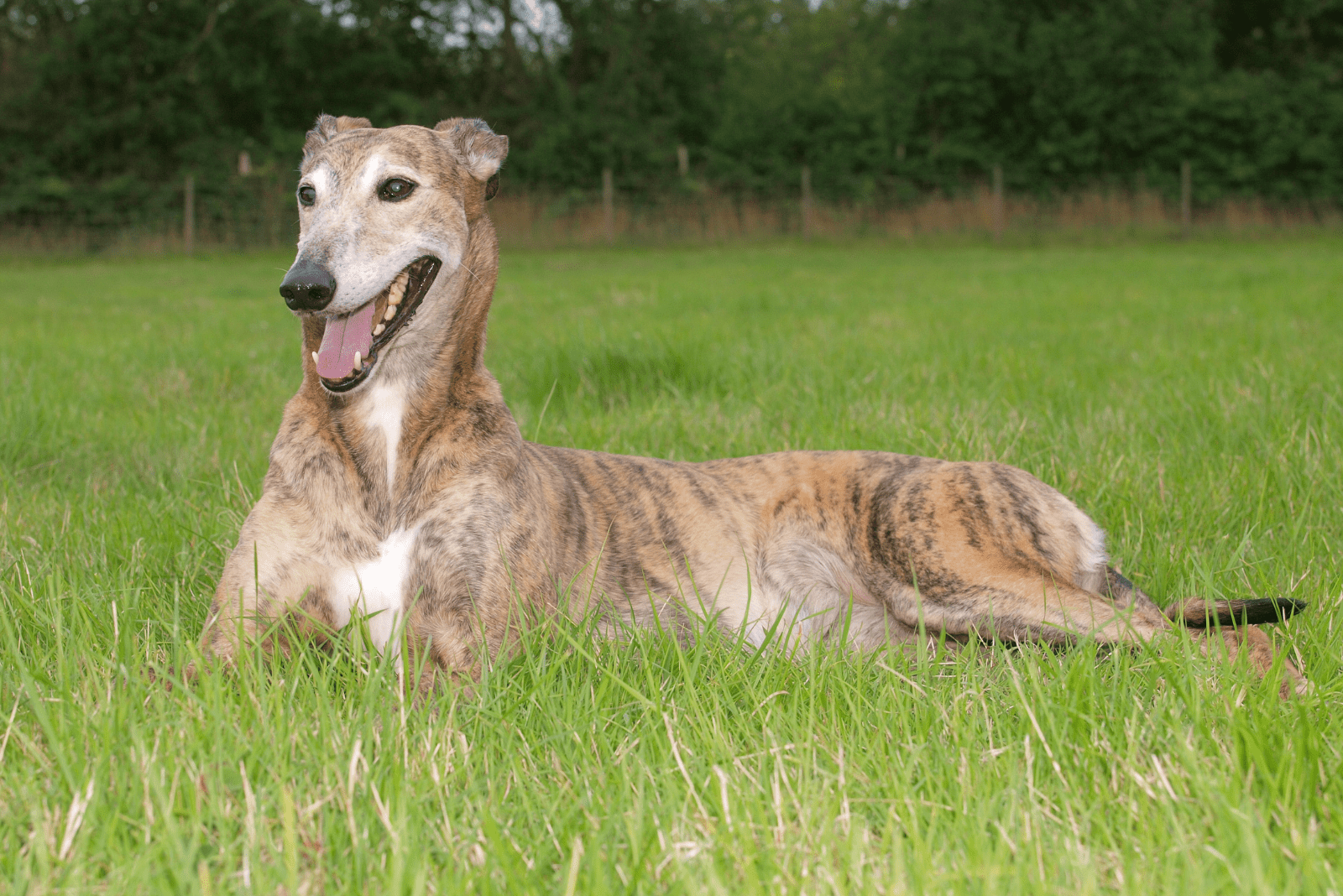
Simply because they are built for rapid motion does not mean they cannot get fat. Naturally shaped to cut through air like arrows, just like their sighthound forbearers, the English and Italian Greyhound’s primary job now is racing.
Being the oldest dog breed known to man, they certainly had different roles back in the day. One of those was coursing game and the other, dating back to ancient Egyptian times, as a status symbol.
The Greyhound can brag about the ancient lineage, athletic body and incredible running speed, being a social marker for the rich and many more things, but one thing they cannot take pride in is the way they feel and look when fat.
Weight gain in Greyhounds can happen for many reasons. The most common, in modern times, is overeating. I am not sure whether ancient Egyptians managed their Greyhounds’ weight properly, but as soon as they assumed (or were assumed) a companionship role the obesity problem arose.
If you are asking yourself how much weight is too much for a Greyhound, it shall all be revealed very soon. Whether underlying health issues or eating too much caused your Greyhound to become obese, you will know all there is to know about managing their weight.
What Is The Healthy Weight For A Greyhound?
The average healthy weight for a male Greyhound is sixty five to seventy pounds, while females range from sixty to sixty five pounds. They are pretty tall dogs with a shoulder height of twenty eight to thirty inches for males and twenty seven to twenty eight for females.
A Greyhound’s racing weight will always be closer to the lower average. A muscular body that is almost pure muscle fiber will perform better when lighter than heavier. Keep in mind that show Greyhounds are slightly taller than racing Greyhounds.
Assessing the body proportions of a Greyhound can be a good method of determining if the dog is obese, skinny or right where it should be. Their heads should not be visibly smaller than the rest of the body.
If the head looks unnaturally small in comparison with the rest of the Greyhound’s physique, then odds are it is overweight. A few ribs should be visible at all times (even with obese Greyhounds), but if the hip bone is not visible, the dog is obese.
The ribcage or chest on a healthy Greyhound should be narrower at the bottom and in no case rounded. A rounded rib cage means that the dog is carrying too much weight.
This dog breed should have a pronounced waist at all times for it to be in the healthy weight category. The lower back should never be aligned with the top of the head. This is a sign of obesity too.
Underweight Greyhounds will look sickly and the otherwise healthy pronounced two to three pairs of ribs will protrude more than an inch.
Italian Greyhound VS English Greyhound
The Italian Greyhound (IG), also known as Iggy, is less muscular and overall smaller in stature in comparison with the Greyhound. An adult IG will be twelve to fifteen inches tall and will weigh from six to ten pounds.
Excess weight on an Italian Greyhound can be noticed with even greater ease than the regular Greyhound. They will appear chunky, way too rounded and with no standard Greyhound pronounced features.
Other physical differences include a slightly different coat quality and a significantly lower shedding potential. In terms of temperament, the Iggy ranks slightly higher in the energy level department, and is much more social than the English Greyhound.
The Italian Greyhound also has a longer lifespan of around fourteen to fifteen years compared to the English Greyhound’s ten to thirteen.
There Is More To Healthy Weight Than Just Pounds
Muscularity is important when talking about a dog’s weight goals. The Greyhound is genetically predisposed to have a low body fat percentage and that is why its physical appearance can be deceiving.
People who are not knowledgeable on the breed will say a Greyhound is too skinny with the ribs waist and hips having clear separation lines. That is not true. The thin skin and low body fat are the reason these body features are pronounced.
Some sources say that the body fat percentage should be as low as two percent, while others consider 17% an average amount. This is definitely something to discuss with your veterinarian and kennel club. The ideal weight will not be the same for a pet and racing Greyhound.
Same goes for retired Greyhounds — they will inevitably be less lean than while at their racing career peak, and will have more specific dietary requirements.
Reasons Why A Greyhound Can Become Fat
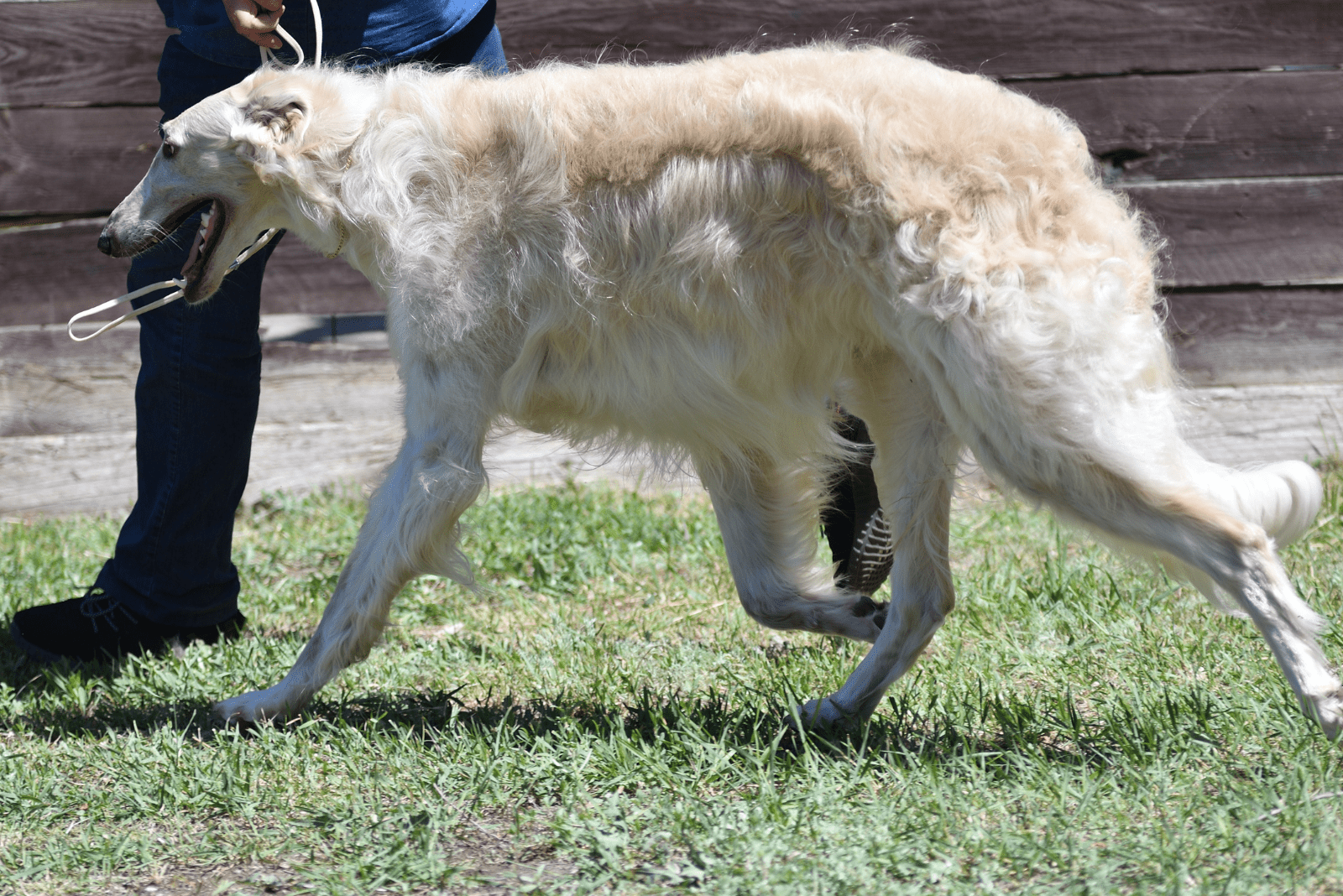
Extra weight can be put on either due to bad eating habits and low quality food or an underlying health problem. Greyhounds are prone to certain conditions because of their deep seated chest and it is not uncommon to see one with gastric dilatation and volvulus (GDV).
There are other health issues that are not directly related to weight gain but can still be a secondary cause of obesity. Such diseases include polyneuropathy, Cushing’s and hypothyroidism.
Human error is the most frequent cause for a fat Greyhound. Proper weight in Greyhounds is a very difficult formula to nail which is why this breed of dog is well known for its couch potato aspirations. They work hard and nap hard.
Those Eating Habits Need A Revamp
You would think these athlete dogs require a high calorie diet. And you would be partially right. Their eating regimes consist of high protein calorie intake to maintain muscle mass without gaining body fat.
In addition to making their energy expenditure more efficient, being the right weight helps keep those joints healthy and ache-free. The pressure and strain the dog’s body goes through while racing is immense, so any excess weight will reduce the dog’s performance and lifespan.
If you feed your Greyhound food leftovers, low quality dog foods with heaps of fillers like commercial kibble, high carb or fat content foods or simply too many meals a day, then that is the most likely cause.
If your dog has open access to food or treats, you must change that. No dog will say no to food even if it is full. With this breed of dog, treats get a whole new meaning. They are the bane of leanness’ existence.
This Kind Of Exercise Is Not Good Enough
Every human racer, especially a sprinter, trains for short bursts of fast running. The Greyhound is no marathoner. The only activity requiring stamina that they love doing is sleeping like racoons on your sofa. A sight to behold.
Whether you adopted a rescue or retired Greyhound or got a brand new puppy to run around with, you will most likely have limited success incorporating proper exercise for them. Sprinting requires a lot of room, and your backyard will not suffice.
Long walks are like triathlons for a Greyhound and will never be as effective at weight management as sprints would. The zoomies overdrive mode is exquisitely hilarious for Greyhound owners but equally deadly for carpets, grass, plants and glass objects.
Getting your Greyhound to fulfill its daily dose of sprinting is no easy task. You will have to find a place where it can run for hundreds of meters without it being populated. The breed is known for a very intense prey drive, so you will probably have trouble trying to accomplish this in parks.
Living an active lifestyle will help, but your Greyhound is much faster than you and it wants to be done with all the energy to get to the couch as soon as possible. Being an individualistic and purpose driven kind of dog, they will not be very fond of diverse playing activities.
The Older They Get, The Quicker They Get Fat
With age, your Greyhound will have progressively lower exercise needs. In this case, the diet will take over the reins for suitably managing your dog’s weight.
Retired Greyhounds will show their owners how good they are at lying on the couch all day. Finally being able to earn their full “pension” will be a dream come true, and the burden of weight management will fall on your culinary shoulders.
This does not mean it will require zero exercise. You will still need to have some dog workout plan and try to build up stamina for even older age. A low calorie diet will be mandatory when your Greyhound pensioner reaches a certain age.
A comprehensive diet is achievable even with low calories. Supplements that include all the necessary vitamins, minerals and unsaturated fats can be implemented through pills and syrups or vet approved natural foods.
Green beans are a well-rounded treat or source of important nutrients. One hundred grams of this healthy legume contain thirty six milligrams of Omega-3 and twenty three milligrams of Omega-6 fatty acids.
Vitamin C dominates the vitamin category at slightly more than sixteen milligrams followed by choline (15.3mg), folate (37 mcg) and vitamin K (14.4mcg).
Green beans are incredibly rich in potassium (209 mg), phosphorus (38mg), calcium (37 mg), magnesium (25mg) and fluoride (19mg).
Pounds Stick To Neutered And Spayed Greyhounds Like…
Neutering or spaying your dog, regardless of breed, will lower the overall energy levels. Sex drive is controlled by the production of testosterone in males and estrogen and progesterone in females.
Removing the reproductive organs that create those hormones means that a complete body system is now absent in the dog’s body. During mating season, sex drive will consume quite a lot of calories, so a spayed or neutered dog will burn fewer calories without it.
Male Greyhounds have considerably higher chances of becoming obese after neutering than females do after spaying. A study has shown that female dogs’ susceptibility to obesity remains unchanged before and after spaying.
Neutering slows down the dog’s metabolism, in turn decreasing the rate at which nutrients are absorbed and converted into energy. The efficacy of the conversion process itself is impacted as well. Losing weight for you Greyhound might be more daunting than you thought.
Owner Lifestyle Synchronization
If you are an owner who likes to chill out in front of the TV and kill a few bags of snacks before bedtime, your Greyhound will gladly join you.
A sedentary lifestyle without a lot of physical activity will be harmful to the dog. It cannot go and exercise itself. As the owner you are responsible for its needs. Mirroring the lifestyle of the owner, the dog will likely overeat or establish bad eating habits.
Irregular meals and plenty of treats whenever it gives you the puppy eyes can often be looked over as a serious problem for Greyhounds. This kind of “diet” can cause conditions such as diabetes or do significant damage to their joints.
A study has found that owner obesity is directly related to dog obesity. The results confirm that the owner’s weight management is often projected onto the dog. This is a great incentive to improve lifestyles and healthy weight loss.
What If I Told You Medication Can Cause Obesity In Dogs
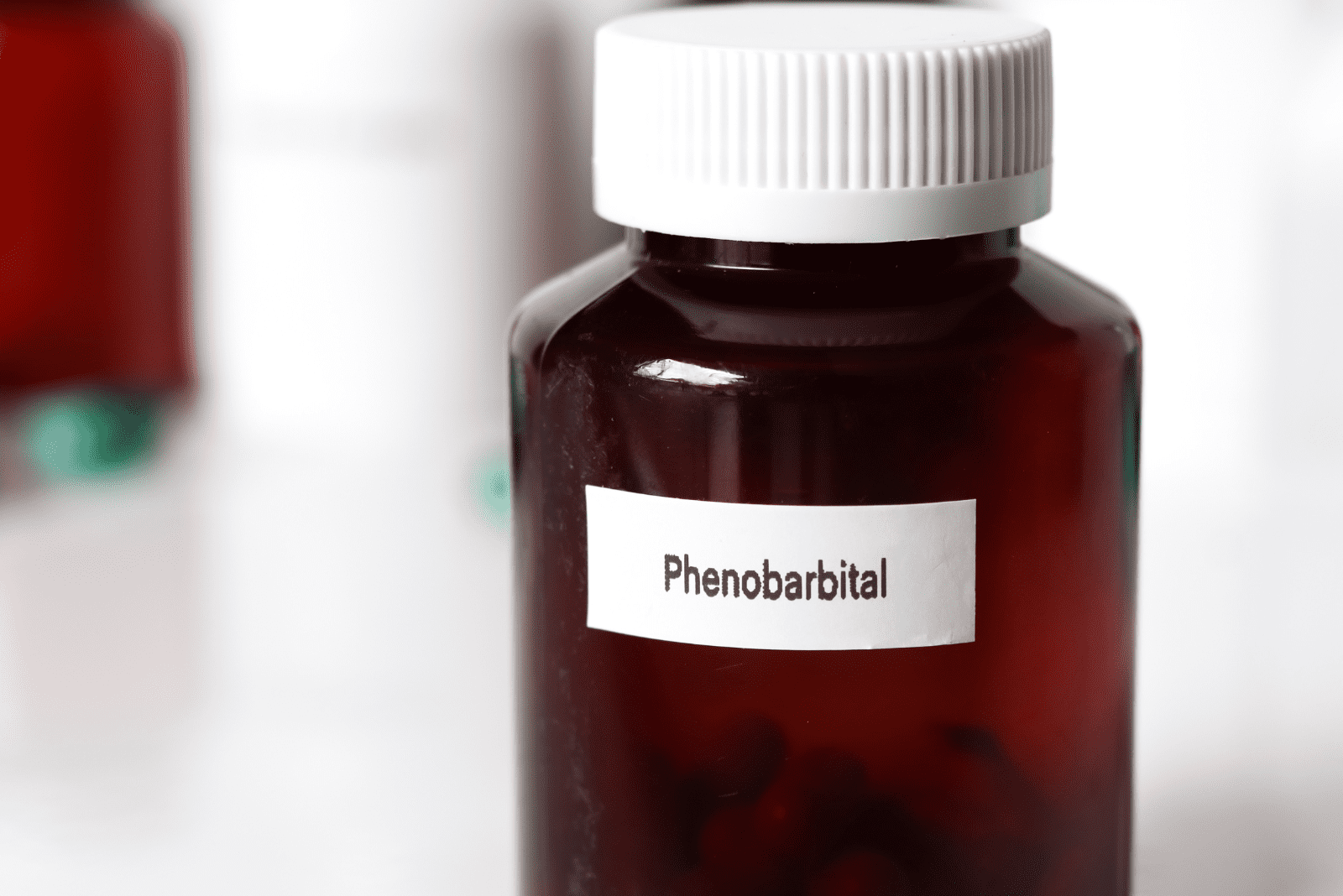
As a dog owner, sometimes we are unsuspecting of medication as a cause for dog obesity. We assume that meds are supposed to help and fix things and not create new problems. The two can often come in pairs due to the Greyhound’s sensitivity to certain types of drugs.
Sight hounds fare much better at not being obese in comparison to other dog breeds such as the Labrador retriever or Cocker Spaniels. However, medication is prescribed for a reason, and not taking it could cause more harm than good.
Phenobarbital
Dogs with seizures have to use anticonvulsants to prevent them. It is also used as a sedative in animal medicine. It comes in several forms: liquid, pill, tablet, chewable or paste. They are usually put in food for the dog to eat without forcing it down the throat.
Animal hospitals and veterinarians can also administer in the form of injection. The effectiveness of barbiturates relies on continuous usage according to a specific schedule. Due to the dog’s body being under a constant influence of phenobarbital, some side effects might occur.
The most common side effect is increased appetite. That increase will translate into ingesting more food without burning up the calories. The feeling of fullness in dogs makes them less keen on physical activity, so the fat will start accumulating.
Phenobarbital can also make your Greyhound lethargic, furthermore increasing the likelihood of becoming an overweight dog. This usually occurs within the first week of treatment.
Glucocorticoids
This type of steroid medication is prescribed to dogs who have an autoimmune disease or suffer from allergies. Some of the well known drugs of this type are betamethasone, dexamethasone, hydrocortisone and methylprednisolone.
The prolonged use of high dosages has a couple effects on a dog’s body. It causes increased appetite and muscular weakness. The Greyhound being a very athletic dog means the muscle weakness causes it to avoid physical exercise and therefore lose muscle tone.
Combined with increased hunger, it substantially increases chances of obesity. Lower doses are used in allergy treatment and are relatively safe with few side effects.
Health Problems That Increase Greyhound Body Weight
Several health conditions are known to have a big impact on weight management in dogs. Like this was not enough, some of the most standardized treatment options for these conditions also increase the chance your dog will become obese.
Hypothyroidism
Metabolic rates are perhaps the biggest factor in body weight changes. The condition is characterized by the underproduction of thyroxine and triiodothyronine (thyroid hormones).
The thyroid gland produces hormones that regulate metabolism. With hypothyroidism, the metabolic rate of nutrient absorption will decrease, making the dog lethargic due to a hindered process of converting food to energy.
Many crucial organs such as the liver, central nervous system and kidneys are key factors in converting the active hormone (thyroxine) into the inactive version (triiodothyronine). The decreased production of the active hormone can severely impact their normal function.
A slowed metabolism and heart rate mean a general feeling of weakness that results in lethargy, making your Greyhound’s willingness to exercise very low.
The two principal causes of hypothyroidism in dogs are lymphocytic thyroiditis and idiopathic atrophy of the thyroid. The former is the culprit in ninety five percent of the cases. The condition is autoimmune, which means the immune system attacks the thyroid thinking it is a foreign body.
Other than obesity, lethargy and lowered physical activity, symptoms include apathy, increased shedding and intolerance to low temperature.
Diabetes Mellitus
The condition manifests itself as the inability to produce enough insulin or the body’s lack of proper response to insulin. Glucose levels are controlled by the insulin, and the underproduction of insulin causes hyperglycemia.
Hyperglycemia causes body cells to be starved for glucose, which means the nutrient to energy conversion is low or even non-existent. Since the glucose cannot enter the cells, the blood becomes oversaturated with it causing damage to blood vessels.
The main symptoms of this condition are physical weakness, lethargy and obesity. The treatment includes insulin shots that will even out the distribution of glucose within the bloodstream and cells.
Dogs most frequently suffer from type two diabetes or noninsulin-dependent diabetes. In type two, the beta cells that produce insulin are completely killed which means no insulin is produced. The only treatment is lifelong shots of insulin.
A dog’s weight management with diabetes will likely be the most difficult setting to do well in. While lowering the caloric intake usually yields results, malnutrition is a very common problem. A cup of food instead of two is qualitatively enough to be considered a proper dietary change.
You will need to provide your dog with highly nutritive food that is low in calories. This is often expensive and hard to achieve since dogs can be quite picky about their food. This is especially the case with dogs that are used to a certain diet.
Diabetes Mellitus hits mid-aged Greyhounds, but younger dogs are not completely excluded. The older the dog, the higher the chance of becoming diabetic.
Cushing’s Disease
Greyhounds have the genetic predisposition to this syndrome. This is one of the leading medical causes for obesity in sighthounds. Cushing’s disease or hyperadrenocorticism is a health condition that basically means an overproduction of cortisol.
With CD, there is a chain of command. The pituitary gland produces adrenocorticotropic hormone. That hormone incites the adrenal gland to produce cortisol. The most common cause for this excessive cortisol production is a pituitary tumor.
If you notice your Greyhound becoming lethargic, overweight, overly thirsty or peeing all the time, then it is probably Cushing’s. The biggest problem with this syndrome is that it often goes undiagnosed due to how difficult and expensive it is to perform the lab tests.
Obesity Can Cause Gastric Dilatation And Volvulus In Greyhounds
Dogs with deep seated chests like the Greyhound are anatomically predisposed to GDV. In essence, this is bloat gone too far. A bloated dog will have its stomach press on the veins in the cavity where the heart lies.
Unlike in humans, dogs need immediate medical attention when bloating occurs. Gastric dilatation and volvulus is the next step of bloat. The stomach will be under so much pressure that it will twist in a way that the accumulated gas or liquid cannot escape.
This can be fatal for your dog if not rushed to an animal hospital. The only way to treat GDV is surgery.
Obese dogs that eat large meals are very prone to the condition. Ingesting the food too quickly can also cause bloat. Studies have found that stress is the most likely cause for GDV and that dogs that had a calmer and less stressful life were much less at risk.
An obese dog will be stressed both physically and mentally. That is why keeping your Greyhound nice and fit can save its life.
Getting Your Greyhound To Lose Weight
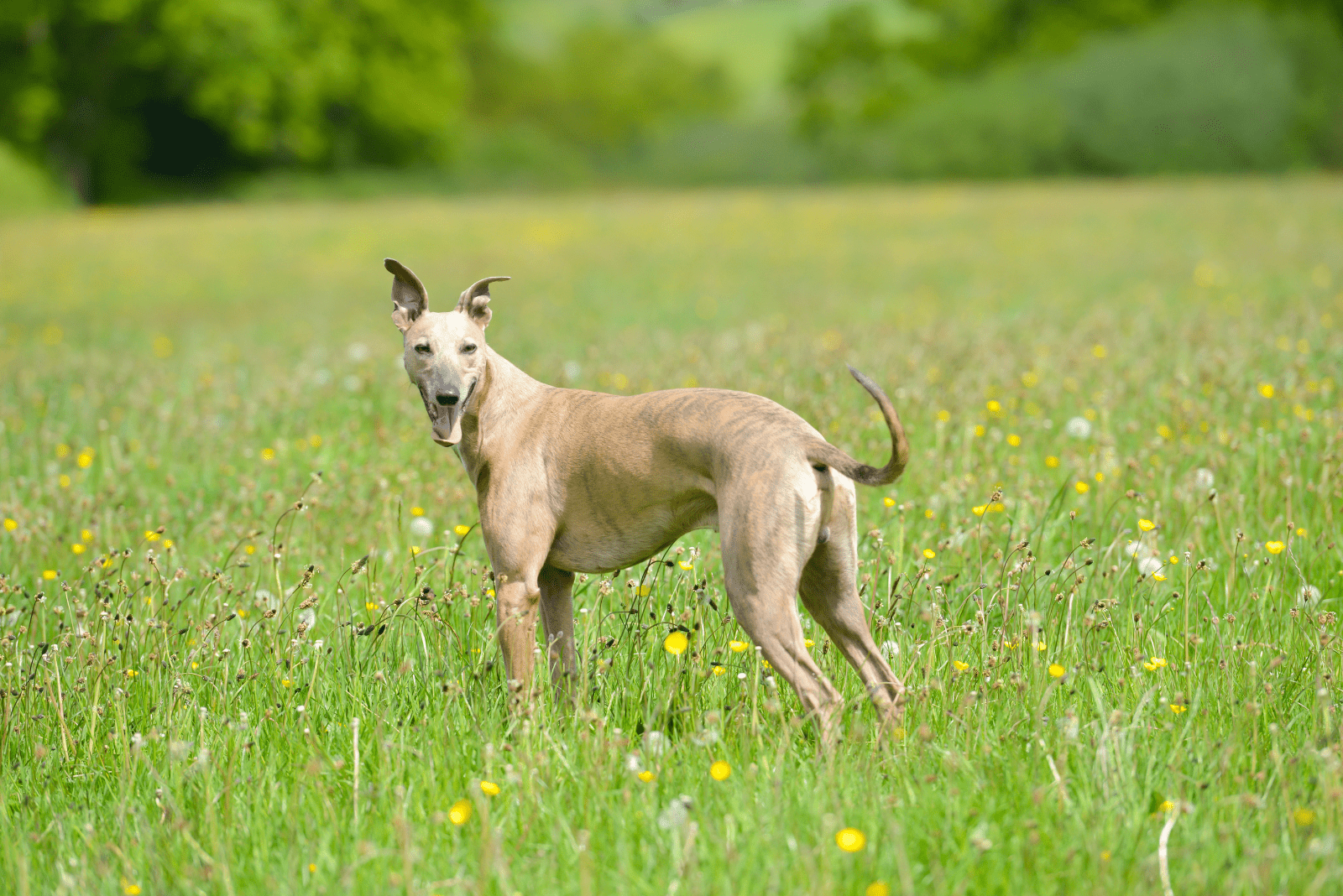
I would never leave you without a possible solution to a problem. You can do many things to get your Greyhound in the best physical shape.
By far the best combination for weight loss is increased exercise and higher quality food. Both are equally important for a healthy and balanced body.
Use The Greyhound’s Prey Drive During Training
Training is important when establishing a good rapport with your dog. Although Greyhounds are known to be a bit stubborn, training will be both a mental and physical exercise.
If you had great results with treats and chews as rewards for obedience training, chances are your dog sees it as free food. You have to raise the bar in terms of exercise difficulty to give the dog a treat.
Each time you give an edible reward, make the next task more difficult. This way your dog will learn that you are not easily pleased. Now onto the main event.
Your Greyhound has an insane prey drive. It will chase anything that is small and fast. Instead of relying on treats as reward, try using a lure coursing machine. These are an incredible addition to your backyard.
If your dog is well behaved you can even go on a nature trip where there are not too many visual stimuli. Being sighthounds, they hunt based on their vision, and a squirrel or two might not be a bad exercise for the day.
Change The Diet Completely
If your dog eats mostly commercial food, it might be time to try some healthier alternatives like home cooked meals. Of course, the transition would not be abrupt, but the long term benefits of cooking some nice healthy meal for your dog can change both your lives.
Combining commercial food with home cooked is a more cost effective and time efficient way to improve your Greyhound’s diet. Some cooked or fresh veggies like green beans, broccoli or spinach can improve the flavor of many kibble products.
Cutting down on the fillers in kibble and wet foods will reduce your dog’s carbohydrate intake. This will improve their digestion and raise energy levels because there will not be that much starchy content to process.
A Slim Summary
Obesity is a serious condition that affects many dogs. People often find fat dogs cute, but in reality, they are simply promoting an unhealthy dog lifestyle. Be meticulous with food selection. Do not be afraid to try new diets and food brands.
Greyhounds are stupendous athletes that require an athlete’s diet too. Prolonging your dog’s life does not have a price. Adequate exercise and a complete and nutrient rich diet is all your dog needs.
Take all of these things into consideration and next time someone calls your dog a fat Greyhound, show them the meaning of haste.
Read Next: Owning A German Shepherd Greyhound Mix: What’s It Like?
